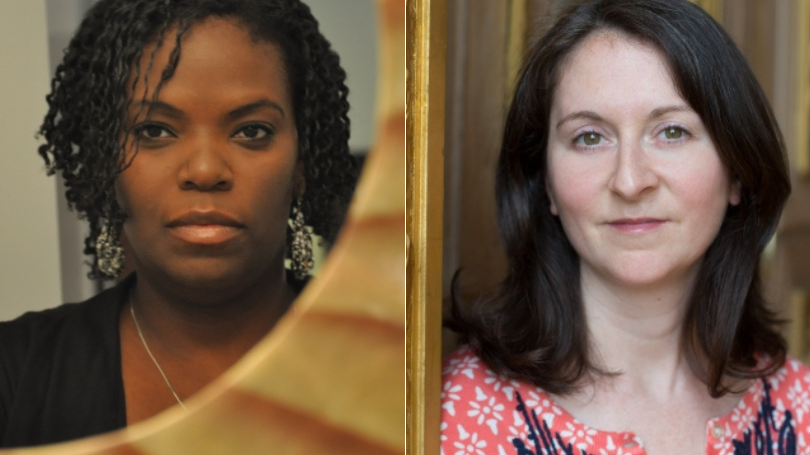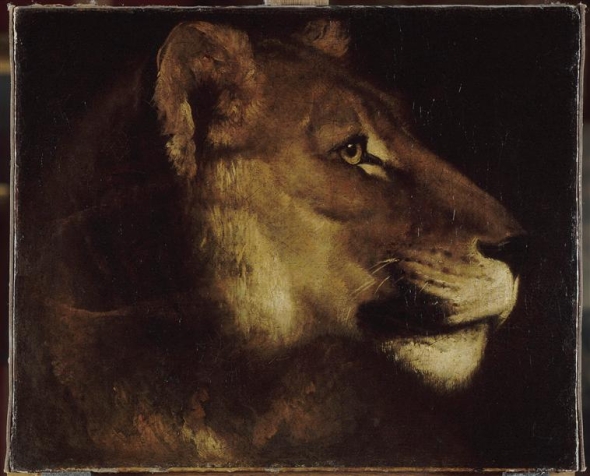

The "Illuminations" and "Animal Modernities" symposia broaden traditional fields with new methodologies and perspectives.
Two academic conferences next week led by Dartmouth faculty members in the humanities will challenge traditional modes of inquiry and foster new fields of study.
"Illuminations: The Dark Room: Race and Visual Culture Studies Seminar 10th Anniversary Symposium" pairs visual culture with race studies through emerging scholarship and performance art.
"Animal Modernities: Images, Objects, Histories, 1750-1900" will focus on 19th-century French art through the lens of animal studies—an interdisciplinary field that explores how humans and animals relate to each other, and the multifaceted implications of these connections.
At the Intersection of Visual Culture and Race Studies
When Kimberly Juanita Brown was in graduate school, there were no networks or communities for emerging scholars like her who sought to combine visual culture with race studies. A literary critic by training, Brown was drawn to interrogating issues of race within visual culture in the same way she'd do a close reading of a poem or novel.
"This combination of visual culture and race was a natural fit for me," says Brown, an associate professor in the Department of English and Creative Writing and currently a fellow at Harvard's Hutchins Center for African and African American Research.
Inspired by her close-knit graduate school quilting group, Brown set out to create "The Dark Room," a collective of women scholars, activists, and artists of color interested in exploring visual culture through the lens of race.
The group began with about a dozen members in 2012 and has since grown to nearly 100 people, including literary critics, social scientists, anthropologists, sociologists, art historians, artists, and curators. At each session participants read and discuss new works and occasionally workshop one another's research and writing. Since the group began, its members have authored approximately 30 articles and books that explore issues at the intersection of race and visual culture studies.
"How do people perceive others? What does it mean to interrogate a museum for its practices that previously went unnoticed? How do we attend to race through the apparatus of the visual? These are central questions for us," Brown says. "If you're working in visual culture at all, you're already on the outskirts of art history. And if you're working on race and visual culture, you're in the margins of the margins. Until I stitched this group together, I didn't think there were so many people doing this kind of work. It's very helpful to have a community of scholars where you don't have to explain why this work matters."
From Oct. 13 to 16, the collective will convene its 12th annual symposium, with events held at Dartmouth and MIT. This year's symposium will be the group's first in-person meeting since before the pandemic—though even before COVID-19, the collective met regularly virtually to accommodate its members around the world.
Sessions are open to the public and will take place at Dartmouth's Gilman Auditorium on Oct. 13 from 4 to 7:30 p.m. and at the Faculty Lounge on Oct. 14 from 10 a.m. to 3:30 p.m. Events on Oct. 15 will take place from 10 a.m. to 6 p.m. at MIT. Many sessions will have a hybrid format, with some panelists and audience members taking part through Zoom.
They will focus on a number of different thematic areas such as geography and empire, with presentations of research papers as well as talks about original films and activism.
Two plenary speakers will showcase the multidisciplinary breadth of the collective: Julie Crooks, head of the Department of Arts of Global Africa and the Diaspora at the Art Gallery of Ontario, will discuss her recent exhibit on visual representations of the Caribbean and its diaspora, "Fragments of Epic Memory"; and DJ Lynnée Denise will share an audio-visual response to The Guardian's 1986 talk with Toni Morrison at London's Institute of Contemporary Arts.
"We have a traditional art historian and curator and a DJ who is also an artist, scholar, and writer," Brown says. "This is the kind of interdisciplinary work that people do within the group that we wanted to highlight."
Brown also hopes that Dartmouth students will attend the symposium and find inspiration in the collective. "I want students to see what's possible based on their interests," Brown says. "It took me a long time to give myself permission to explore what I knew I was interested in. What I say to my students is that if it makes sense to you, it probably makes sense. Don't fight that. Attend to your investments—they will never steer you wrong."
Challenging Art History's Anthropocentrism
When art history professor Katie Hornstein was leading her first art history foreign study program with Dartmouth students in 2015, she stumbled upon a historical document that propelled her research in a new direction.
While reading about the French conquest of Algeria, she came across an official compendium prepared by the French military in 1837 of all the items they had extracted from the North African country. Alongside predictable goods such as cotton, wool, and leather, Hornstein discovered a list of "something like 4,837 lions, hyenas, and panthers."
"That's a staggering amount of animal life," Hornstein says. The document didn't specify if the animals were dead or alive. Hornstein traced the records over a six-year span and saw the statistic get even higher. "Where were all these animals going? When do we see them reflected in other areas?"
Hornstein soon realized that lions were abundant in 19th-century French art—a pivotal period when technologies of visual reproduction made art accessible to a broad public. Having devoted her first book to 19th-century war imagery and how it enabled French citizens to form allegiances with political entities, she found herself again drawn to political themes, specifically "the politics of being human and relating to non-human life."
"My field in many ways is still beholden to a model of art history where we put the human first and we valorize the genius of individual artists," Hornstein says. "I wanted to ask, 'What happens if we displace the long-ingrained anthropocentrism of art history and try to destabilize the eminence of the human?'"
A research paper evolved into a book, forthcoming next year from Yale University Press, Myth and Menagerie: Seeing Lions in the Nineteenth Century.
Her research in turn inspired the "Animal Modernities" conference that Hornstein will lead at Dartmouth on Oct. 13 with fellow art historian Daniel Harkett, a professor at Colby College. Horstein and Harkett have invited scholars to challenge the traditional subservience of "non-human animals" in accounts of the emergence of modern visual culture between 1750 and 1900.
"We're trying to get away from iconography and think of animals as co-creators, with a more active role in art history than just as inert subject matter for brilliant artists to discover and represent," Hornstein says.
Sponsored by the Leslie Center for the Humanities, the Department of Art History, and the Department of French and Italian, the conference will feature presentations by visiting scholars as well as Dartmouth faculty members such as Middle Eastern studies professor Tarek Al-Ariss, Alysia Garrison, an assistant professor of English, and yasser elhariry, a professor of French.
Several Dartmouth undergraduate students are also expected to attend, including seniors enrolled in an art history seminar on theory and method taught by Professor Mary Coffey.
The conference is open to the public; registration is encouraged by emailing the Leslie Center at humanities.center@dartmouth.edu.
Participating scholars will also take part in a follow-up workshop at Colby College in April to prepare their papers for publication in an edited volume.
Hornstein takes pride in the "weird papers" the conference has inspired. "Weirdness is creative," she says. "I'm excited how we are challenging the idea of what animal participation looks like in art history."

A self-avowed "cat person," Hornstein also takes pleasure in finally being able to write about a painting she has admired for decades: Head of a Lioness by Théodore Géricault.
"The lion's eye has a tiny highlight of white paint that activates her so that she's not just a passive subject—cats, after all, are always tracking," Hornstein says. "She's an animated and complex subject who knows that she's being watched."
"By putting the lion's head in this concentrated, compressed space, Géricault forces us into a relationship with her," Hornstein continues. "We could conceivably call it a portrait."
"I think it's one of the most stunning images of a cat we've ever seen."